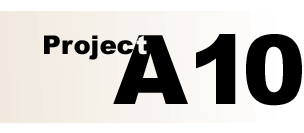
 |
|
Project Leaders:
|
Researchers: Chritine Waag Research Area:
|
|
|||||||
Research
Program As a result of archaeological research carried out within the research project ACACIA so far, it can be shown that the former Wadi Howar (“Yellow Nile”) region in northern Sudan constituted an important contact zone for the diffusion of cultural traditions. To date, linguistic research in the region between Chad in the west and northern Ethiopia and Eritrea in the east shows that longterm language contact also played an important role. The desertification of the Wadi Howar apparently resulted in a dissolvement of this contact zone as well as in a diaspora of Nilo-Saharan language groups in a southwestern, southern and southeastern direction. The dominant language in this region, more specifically in the fertile land around Jabal Marra, was For, also known as Fur or Poor. From a genetic point of view, For constitutes a relatively isolated unit within the Nilo-Saharan language family. It used to be the lingua franca of this area in western Sudan, until Arabic became dominant. These days, teaching in schools takes place in Arabic; moreover, Arabic is the major language used in business as well as in public administration. With the gradual disappearance of this language, the traditional culture of the For may disappear as well, as shared knowledge about the history and cultures of the region is tied in closely with this language. Project A10 within ACACIA focuses on the investigation of this former lingua franca of the region, For, the language of the Poora people. An investigation of the lexicon as well as a detailed analysis of the grammar should result in a more in-depth knowledge of this language, also allowing for a more extensive comparison with other languages in the area. The main focus of the present study will be on features which are of particular significance from an areal point of view, e.g. constituent order, case, and the complex verb morphology system. In addition, as many data as possible will be gathered on semantic fields such as animal husbandry, agriculture, iron working and pottery. Moreover, different text genres will be collected, ranging from stories about gender roles in daily life, history, narrative discourse towards ritualized language. The linguistic investigations are potentially significant from an archaeological and cultural-historical point of view as well, as they may allow researchers to link up language data (e.g. on semantic fields referred to above) to findings about the cultural history of the region, e.g. by using the so-called “words-and-things” method. Without such linguistic investigations, this important source for historical research on the area will be lost forever. Given the rather dramatic linguistic situation in northern and central
Sudan involving the loss of many languages, it is of utmost importance
to document
as many endangered languages as possible in the near future. This way,
crucial information on
typological and genetic properties of these languages may still be
captured. Moreover, such languages potentially contain important lexical
information
on cultural traditions in the area. This latter type of information
is also potentially
significant for anthropological research, as languages tend to reflect
culturally significant notions in their lexicon. |
| [Main]
[Project A1] [Project
A2] [Project A3] [Project
A5] [Project A6] [Project
A7] [Project
A8] [Project
A9] [Project A10] |